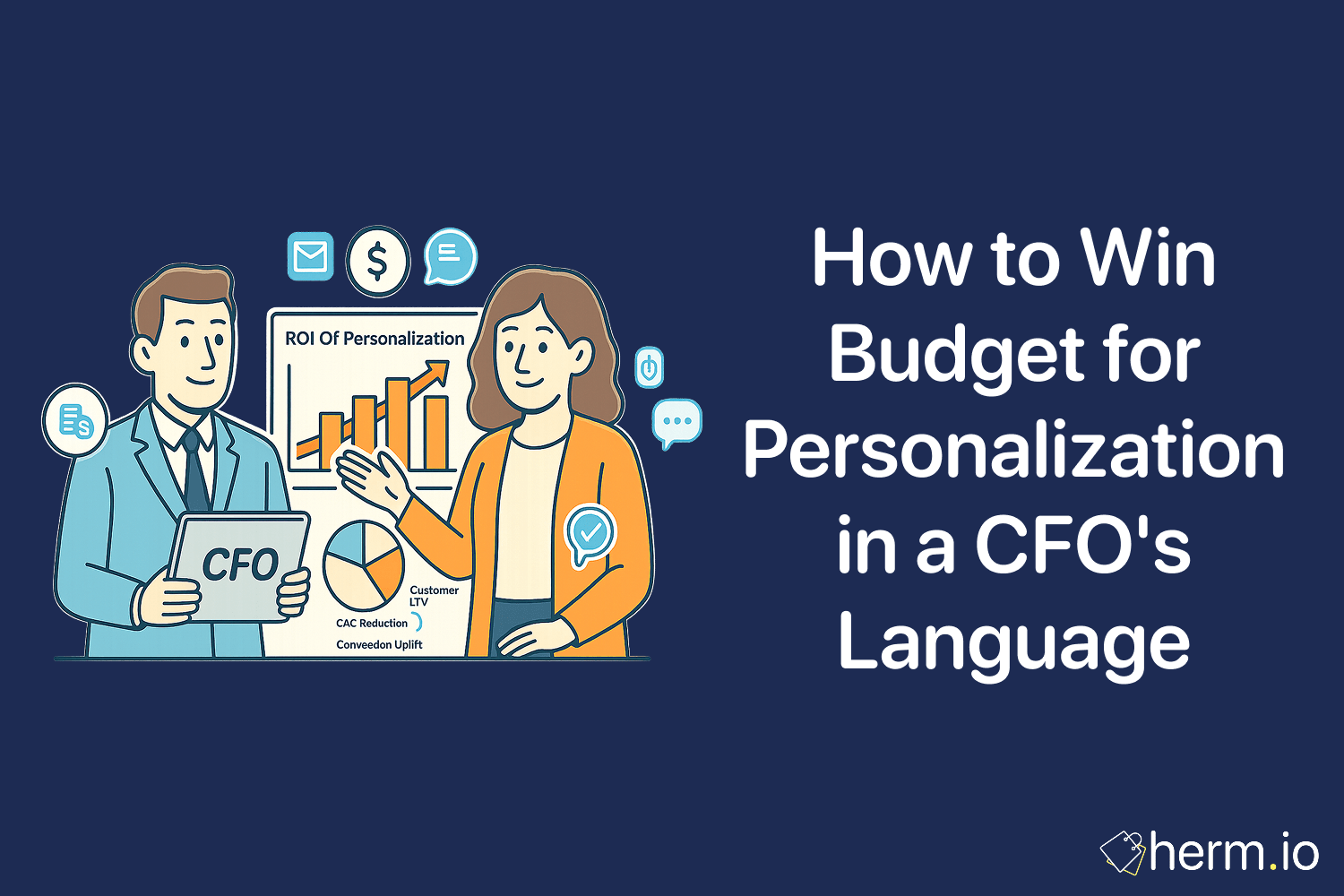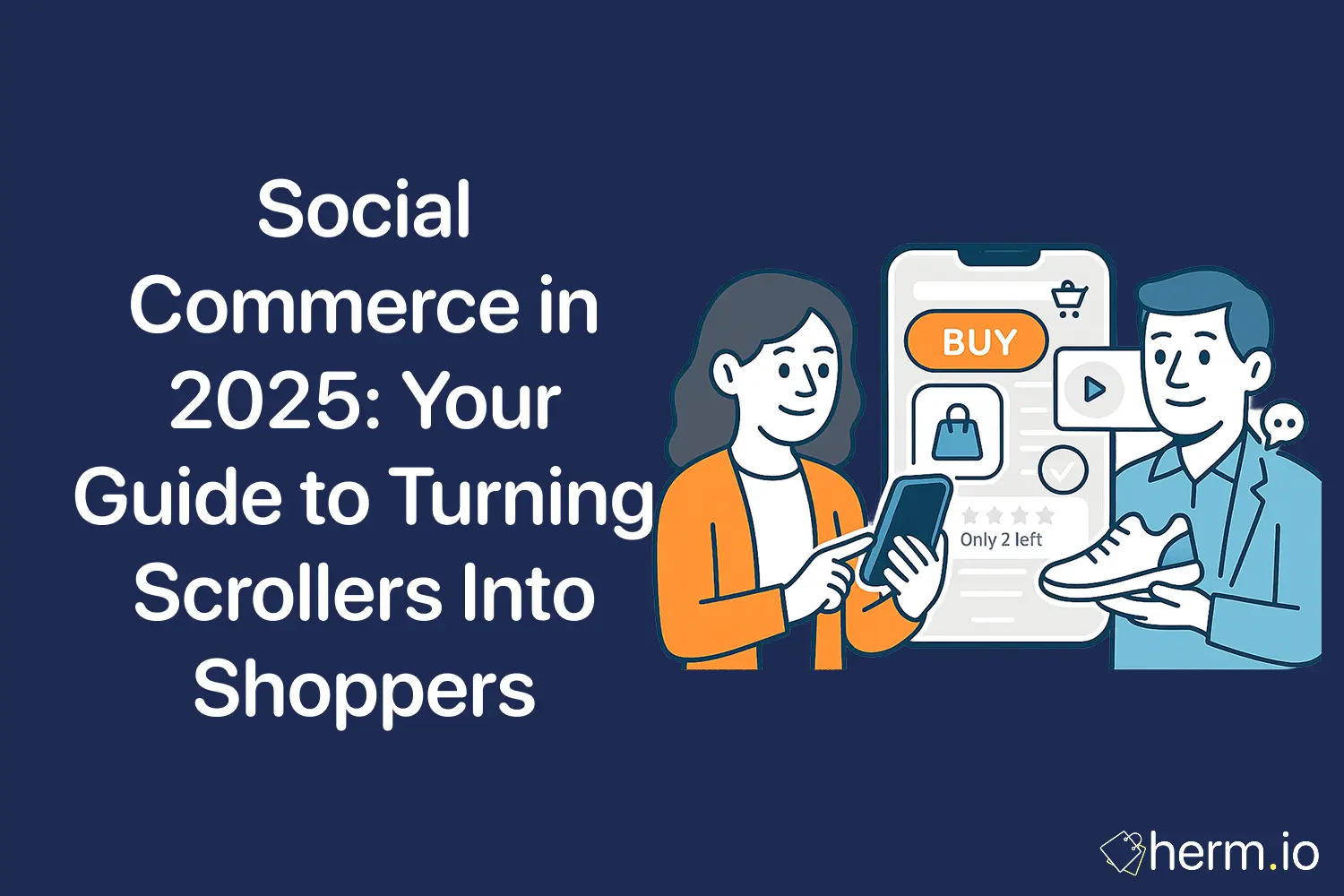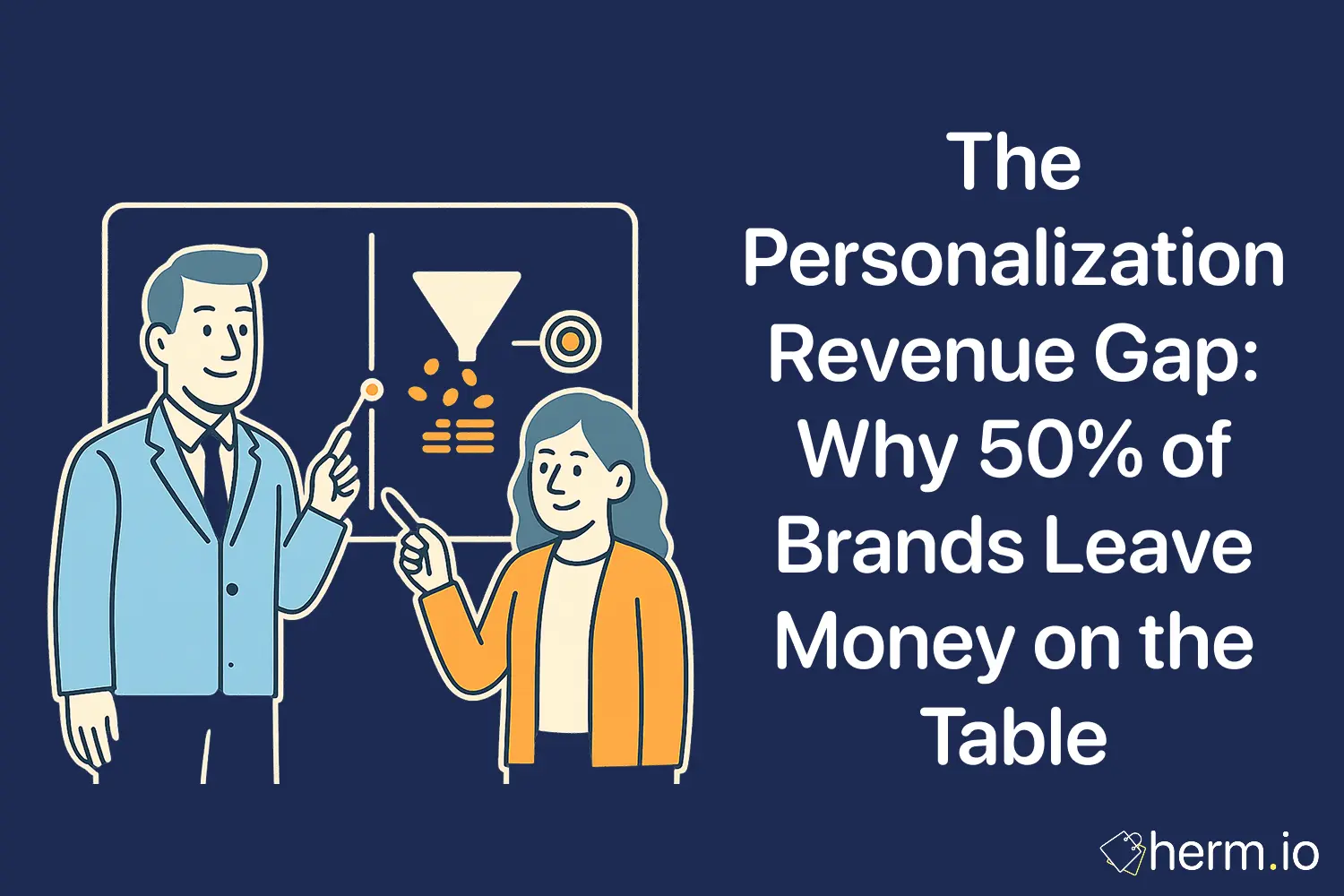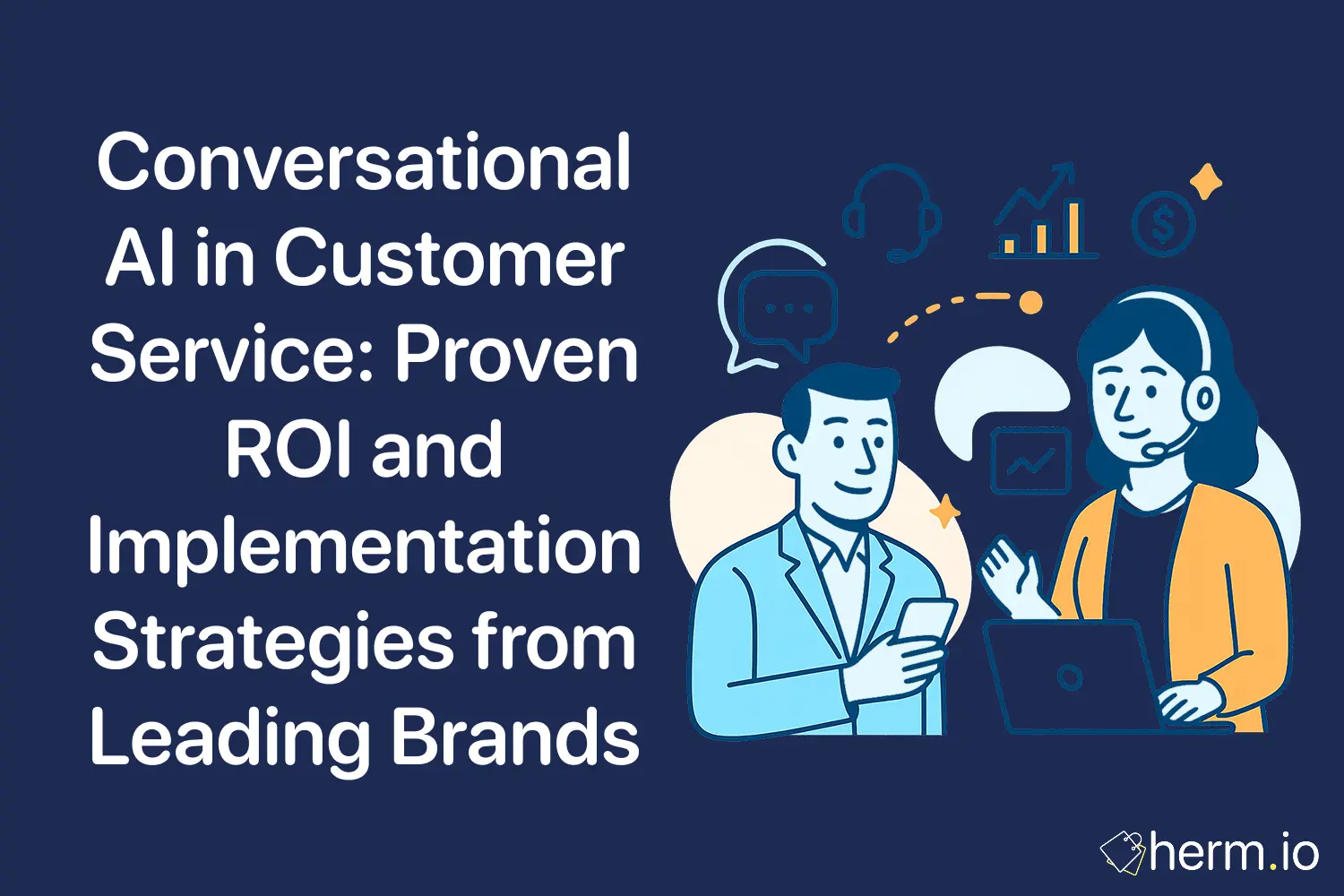
Looking at your latest quarterly review, I suspect you've encountered the same frustrating dynamic that's plaguing marketing teams across the Fortune 1000: presenting brilliant personalization strategies to your CFO, only to watch their eyes glaze over when you mention "customer journey optimization" or "enhanced brand affinity."
Here's what actually works when building your investment case. According to research from Boston Consulting Group, organisations that achieve stronger alignment between marketing and finance can unlock 20-40% more financial upside while accelerating revenue growth. The challenge isn't proving personalization's value—the data overwhelmingly supports it. The challenge is translating that value into the financial language your CFO understands and trusts.
Let me share the framework that's helping marketing leaders secure substantial personalization budgets by speaking directly to what keeps CFOs awake at night: sustainable growth, measurable returns, and competitive positioning.
The Financial Reality of Personalization Investment
The numbers tell a clear story that resonates in boardrooms. McKinsey's 2021 research reveals that companies excelling at personalization generate 40% more revenue from those activities compared to average performers. More importantly for your CFO, fast-growing companies derive 40% more of their total revenue from personalization than their slower-growing counterparts.
This isn't about marginal improvements. Deloitte's 2024 research shows that 50% more brands now view personalization as core to their customer strategy compared to just two years ago, with organisations planning an average 29% increase in personalization spending. The question for your CFO isn't whether to invest—it's whether your organisation can afford to fall behind while competitors capture these gains.
The implementation typically delivers measurable returns within quarters, not years. Research consistently shows personalization driving 10-15% revenue lift across sectors, with company-specific improvements ranging from 5-25% depending on execution capability and industry context.
Converting Marketing Metrics into CFO Language
Your CFO thinks in terms of customer acquisition cost (CAC), lifetime value (CLV), and payback periods. Harvard Business Review's research with over 600 executives shows that organisations implementing personalization report a 25% increase in marketing ROI alongside significant improvements in customer retention metrics.
Consider how Starbucks framed their personalization investment to leadership. Rather than discussing "enhanced customer experiences," they presented their Deep Brew AI initiative as a retention and efficiency play. The results speak for themselves: 30% increase in marketing ROI and 15% rise in customer engagement levels. More critically, their personalization engine now predicts customer preferences with sufficient accuracy to reduce waste while increasing average transaction values.
The key insight for your CFO conversation is positioning personalization as customer retention infrastructure rather than marketing enhancement. When Netflix executives present their recommendation algorithms to investors, they emphasise that the system saves approximately $1 billion annually by reducing subscriber churn through more satisfying content delivery.
Building Your Three-Pillar Investment Framework
Implementation requires three key components that align with CFO priorities: measurable impact, scalable infrastructure, and competitive positioning.
Pillar One: Revenue Protection and Growth
Start with the defensive value proposition. Accenture's research shows that 48% of consumers now abandon websites due to poorly curated experiences—up from 40% just two years prior. This represents immediate revenue leakage that personalization directly addresses.
Frame this for your CFO as market share protection. Deloitte's findings show that 71% of consumers expect personalised interactions, with 76% expressing frustration when brands fail to deliver. Your competitors implementing personalization aren't just improving their customer experience; they're actively eroding your market position.
The offensive case is equally compelling. Research demonstrates that consumers receiving personalised experiences are 37% more likely to increase their spending with those brands. Amazon's success provides the benchmark: approximately 35% of their e-commerce revenue stems from AI-driven product recommendations, translating to billions in incremental sales.
Pillar Two: Operational Efficiency and Cost Reduction
Your CFO will appreciate personalization's ability to reduce customer acquisition costs while improving marketing spend efficiency. Companies implementing sophisticated personalization report up to 50% reduction in acquisition costs through more precise targeting and higher conversion rates.
McDonald's provides an excellent case study for operational efficiency. Their acquisition of Dynamic Yield enabled personalised drive-thru menu boards that factor time of day, weather conditions, and customer history. Within six months of testing, they deployed the technology across 12,000 drive-thrus nationwide due to measurable increases in average order value with minimal operational overhead.
The efficiency gains compound over time. Capital One's investment in data-driven personalization yielded notable increases in product adoption while reducing churn and increasing customer lifetime value. Their approach demonstrates how personalization transforms from cost centre to profit driver by improving customer economics across the entire relationship lifecycle.
Pillar Three: Competitive Moat and Market Positioning
Position personalization as infrastructure investment rather than marketing tactic. Companies achieving top-quartile personalization performance significantly outperform others in market share and customer retention, creating sustainable competitive advantages that compound annually.
The research shows a widening gap between personalization leaders and laggards. High-maturity brands allocate 66% of their marketing budget to personalization compared to 38% for low-maturity organisations—a 28 percentage-point gap that's expanded significantly since 2022.
This creates a strategic imperative that resonates with CFOs focused on long-term competitive positioning. Early movers in personalization aren't just capturing near-term revenue gains; they're building customer data assets and algorithmic capabilities that become increasingly difficult for competitors to replicate.
Presenting the Financial Model
Your CFO needs a clear financial model that demonstrates both near-term returns and long-term value creation. Structure your presentation around three financial scenarios: conservative, expected, and optimistic outcomes based on industry benchmarks.
Conservative projections should reflect the lower end of documented results: 5% revenue lift, 10% improvement in marketing efficiency, and modest reductions in customer acquisition costs. Even these conservative estimates typically generate positive ROI within 12-18 months when properly implemented.
Expected outcomes align with median research findings: 10-15% revenue improvement, 25% marketing ROI increase, and 20-30% improvement in customer engagement metrics. These projections reflect what well-executed personalization initiatives achieve across various industries and company sizes.
Optimistic scenarios, while aspirational, remain grounded in documented case studies. Companies like Revolut achieved explosive user growth through personalized referral programs, while American Express saw significant increases in customer retention and satisfaction following their Membership Rewards redesign.
Implementation Timeline and Resource Requirements
Your CFO will want clear timelines and resource allocation. Research suggests successful personalization implementation follows a phased approach over 12-24 months, with initial improvements visible within the first quarter.
Phase one typically focuses on email personalization and basic website customization—areas where Harvard Business Review research shows 69% of consumers prefer to receive personalized marketing. These initiatives require minimal technical infrastructure while demonstrating early wins that build internal support for broader investment.
Phase two expands into product recommendations and dynamic pricing—areas where research shows the highest ROI potential. This phase requires more sophisticated data infrastructure but delivers the substantial revenue improvements that justify larger budget allocations.
Phase three involves real-time personalization across all touchpoints, including mobile applications and customer service interactions. Companies reaching this level report the most significant competitive advantages and customer lifetime value improvements.
Addressing CFO Concerns and Objections
CFOs typically raise three concerns about personalization investment: data privacy risks, technology complexity, and measurement challenges. Address each directly with research-backed responses.
Privacy and Compliance Considerations
Harvard Business Review's research shows that 92% of executives agree customer trust represents their greatest asset. Rather than viewing privacy regulations as constraints, frame them as competitive opportunities. Companies implementing privacy-first personalization strategies often achieve higher customer trust scores and engagement rates.
Deloitte's research reveals that 78% of consumers want personalization that helps them save money, while 84% respond positively to special discount offers. This suggests customers willingly engage with personalization when they perceive clear value exchange—a dynamic that actually reduces privacy concerns while improving business outcomes.
Technology Integration and Scalability
Address complexity concerns by emphasising proven technology platforms and vendor partnerships. Many marketing cloud providers now offer end-to-end personalization suites that integrate with existing systems, reducing implementation risk while providing scalable infrastructure.
The research shows that 55% of surveyed brands currently utilize customer data platforms (CDPs), with leaders investing in analytics, testing, and measurement capabilities that create sustainable competitive advantages. Position technology investment as business infrastructure rather than marketing tools.
Measurement and Attribution
Your CFO needs confidence in measurement capabilities. Research demonstrates that companies systematically tracking AI and personalization impact achieve 20-30% higher campaign ROI than those without robust measurement frameworks.
Establish clear KPIs that align with CFO priorities: customer acquisition cost reduction, lifetime value improvement, and revenue per customer increases. These metrics translate directly into financial outcomes while providing ongoing justification for continued investment.
Advanced Strategies for Securing Budget Approval
Implementation requires three key steps that address CFO decision-making processes while building organisational support for personalization investment.
Step One: Pilot Program Development
Start with controlled pilots that demonstrate measurable ROI within quarterly reporting cycles. Focus on high-impact, low-risk initiatives like email personalization or product recommendation engines that require minimal technical infrastructure while delivering quantifiable results.
Document everything meticulously. Your CFO will want to see clear before-and-after comparisons, statistical significance testing, and extrapolated impact across your entire customer base. Companies successfully scaling personalization typically begin with pilots that achieve 15-25% improvement in target metrics.
Step Two: Cross-Functional Business Case Development
Collaborate with your sales, customer service, and product teams to build comprehensive business cases that demonstrate personalization's impact across multiple functions. Research shows that organisations treating personalization as enterprise-wide capability rather than marketing tactic achieve superior results.
Finance teams appreciate business cases that show multiple value streams: marketing efficiency, sales conversion improvement, customer service cost reduction, and product adoption acceleration. This comprehensive approach justifies larger budget allocations while reducing implementation risk.
Step Three: Competitive Intelligence Integration
Present your CFO with specific intelligence about competitor personalization capabilities and market positioning. Research indicates that companies failing to match industry personalization standards experience declining market share and customer retention rates.
Document competitor innovations, customer experience improvements, and market share gains attributable to personalization investment. This positions your proposal as defensive strategy rather than speculative growth initiative—a framing that typically resonates with CFO risk management priorities.
Maximising Your Presentation Impact
The research reveals clear patterns in successful CFO presentations. Finance leaders respond most positively to proposals that emphasise customer economics, operational efficiency, and competitive positioning rather than customer experience improvements or brand enhancement.
Structure your presentation around three financial outcomes: revenue growth acceleration, cost reduction achievement, and competitive advantage creation. Support each outcome with specific research data, industry benchmarks, and documented case studies that demonstrate measurable financial impact.
Your CFO wants to understand implementation risk, resource requirements, and success measurement frameworks. Address these concerns proactively by presenting phased implementation plans, vendor partnership strategies, and comprehensive measurement approaches that align with existing financial reporting processes.
The companies achieving substantial personalization budgets consistently frame their proposals as strategic investments in customer data infrastructure and algorithmic capabilities rather than marketing campaign improvements. This positioning acknowledges personalization's role in long-term competitive advantage while addressing CFO concerns about sustainable return on investment.
According to Analytic Partners' research on CFO-CMO collaboration, organisations achieving "Full Strategic Trust" between these functions co-own commercial growth agendas and share accountability for revenue, profit, brand health, and customer experience outcomes. Position your personalization proposal as contributing to this strategic partnership rather than requesting additional marketing resources.
The evidence overwhelmingly supports personalization investment, but CFO approval requires translating that evidence into financial language that addresses their specific priorities and concerns. Focus on measurable outcomes, implementation feasibility, and competitive positioning to build compelling business cases that secure the resources your personalization strategy deserves.
Companies that master this translation consistently outperform competitors in customer acquisition, retention, and lifetime value while building sustainable competitive advantages through superior customer data utilization and algorithmic capabilities.
FAQ
How do I calculate the ROI of personalization for my CFO?
Start with baseline metrics for customer acquisition cost, lifetime value, and conversion rates. Research shows personalization typically delivers 10-15% revenue lift and 25% marketing ROI improvement. Use conservative projections (5% improvement) for initial calculations, then model expected (10-15%) and optimistic (20%+) scenarios based on industry benchmarks. Include both direct revenue impact and efficiency gains from improved targeting and reduced acquisition costs.
What's the minimum budget needed to start personalization initiatives?
Research indicates successful pilots can begin with modest investments in email personalization and basic website customization. Many companies start with £50,000-£100,000 quarterly budgets focused on proven areas like product recommendations or dynamic email content. The key is demonstrating measurable ROI within 3-6 months to justify larger investments in comprehensive personalization infrastructure.
How long before we see measurable results from personalization investment?
Harvard Business Review research shows initial improvements typically appear within the first quarter for email and website personalization. Companies implementing comprehensive personalization strategies report significant ROI within 12-18 months. Netflix's £1 billion annual savings from recommendation algorithms and Starbucks' 30% marketing ROI improvement demonstrate the substantial long-term value creation potential.
What metrics matter most to CFOs when evaluating personalization?
CFOs prioritise customer acquisition cost reduction, lifetime value improvement, and revenue per customer increases. Research shows successful programmes also demonstrate marketing spend efficiency gains, customer retention improvements, and competitive market share protection. Focus on financial outcomes rather than engagement metrics when presenting to finance leadership.
How do I address CFO concerns about data privacy and personalization?
Frame privacy compliance as competitive advantage rather than constraint. Deloitte research shows 78% of consumers want personalization that saves them money, indicating willingness to engage when value exchange is clear. Emphasise privacy-first approaches that build customer trust while delivering business results. Companies with transparent data practices often achieve higher engagement rates than those without clear privacy policies.
What's the biggest mistake when presenting personalization budgets to CFOs?
Leading with customer experience benefits rather than financial outcomes. CFOs respond to revenue growth, cost reduction, and competitive positioning arguments supported by concrete data. Avoid marketing jargon and focus on business metrics that directly impact profit and loss statements. Present implementation as strategic infrastructure investment rather than campaign enhancement.
How do I compete with other departments for personalization budget?
Position personalization as enterprise capability that benefits multiple functions rather than marketing-specific initiative. Research shows cross-functional business cases achieve higher approval rates because they demonstrate broader organisational value. Include sales conversion improvements, customer service efficiency gains, and product adoption acceleration in your financial model to justify larger budget allocations.
References
Research Materials Used:
Accenture Interactive (2018) - Personalization Pulse Check 2018
- Key insights extracted: Consumer expectation data, experience gap analysis, transparency requirements
- Featured case studies: Consumer behaviour patterns, trust and personalization balance
- Critical data points: 91% consumer preference for personalised brands, 48% abandonment due to poor curation
- Recommended focus areas: Two-way dialogue strategies, transparency frameworks
McKinsey & Company (2021) - Next in Personalization Report - McKinsey Global Institute
- Key insights extracted: Revenue impact analysis, performance differential data, implementation frameworks
- Featured case studies: Fast-growing company analysis, personalization maturity models
- Critical data points: 40% revenue advantage for personalization leaders, 10-15% typical revenue lift
- Recommended focus areas: Customer lifetime value optimisation, competitive advantage creation
Deloitte Digital (2024) - Personalization Value Exchange Research - Deloitte Consulting
- Key insights extracted: Investment trends, consumer value perception, generational differences
- Featured case studies: Channel effectiveness analysis, consumer preference evolution
- Critical data points: 50% increase in brands prioritising personalization, 29% budget increase plans
- Recommended focus areas: Value proposition development, channel optimisation strategies
Analytic Partners (2025) - CFO-CMO Partnership Research - Commercial Analytics Platform
- Key insights extracted: Collaboration maturity models, financial alignment strategies, partnership frameworks
- Featured case studies: Four-stage partnership evolution, financial impact measurements
- Critical data points: 20-40% financial upside potential, 81% effectiveness recognition rates
- Recommended focus areas: Strategic trust development, commercial growth integration
Harvard Business Review Analytic Services (2018) - Personalization Research Survey
- Key insights extracted: Executive perspectives, implementation challenges, ROI measurement approaches
- Featured case studies: Global enterprise implementations, measurement methodologies
- Critical data points: 90% customer expectation rates, 25% marketing ROI improvements
- Recommended focus areas: Technology integration, measurement frameworks, competitive positioning
Featured Case Studies from Research:
Netflix: Found in Multiple Research Sources - £1 billion annual savings through personalization - 2018-2024 timeframeStarbucks: Found in AI Personalization Research - 30% marketing ROI increase, 15% engagement improvement - 2023-2024 implementationAmazon: Found in HBR and McKinsey Research - 35% revenue from recommendations - Ongoing implementationMcDonald's: Found in Personalization Case Studies - Average order value improvements from Dynamic Yield - 2019-2024 deployment

Élodie Claire Moreau
I'm an account management professional with 12+ years of experience in campaign strategy, creative direction, and marketing personalization. I partner with marketing teams across industries to deliver results-driven campaigns that connect brands with real people through clear, empathetic communication.

.png)








.png)

.png)
.png)
.png)